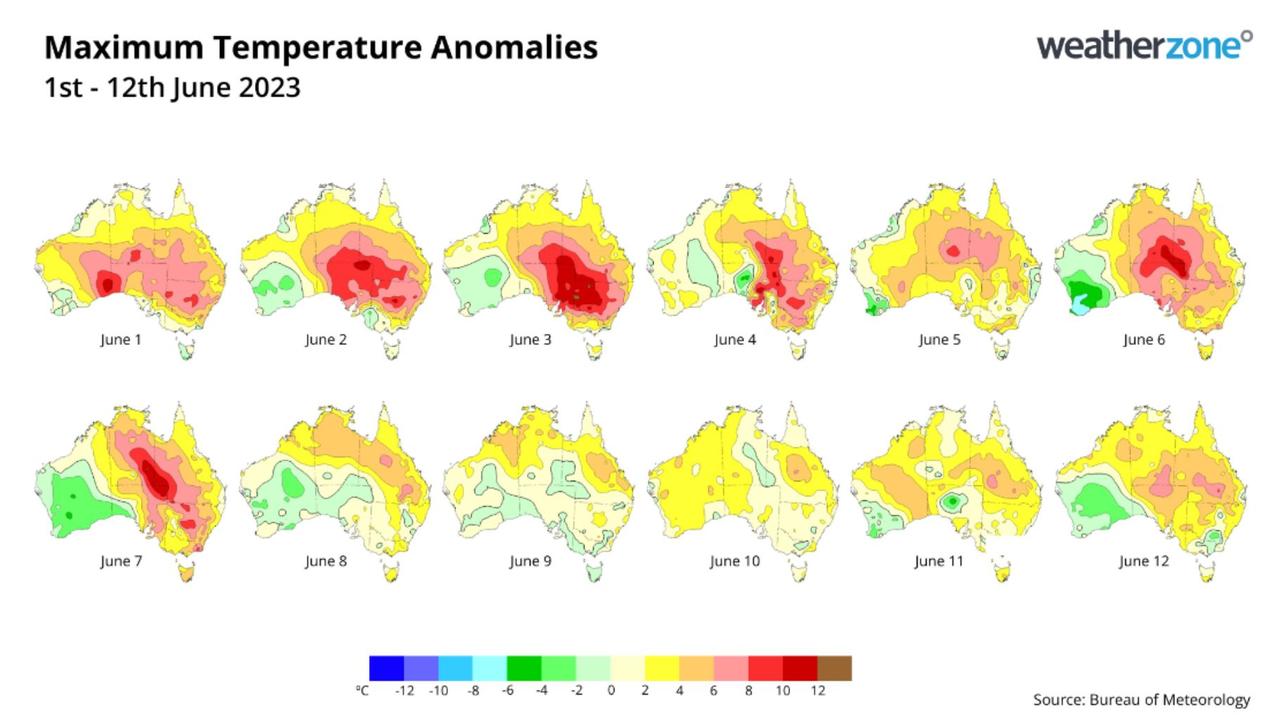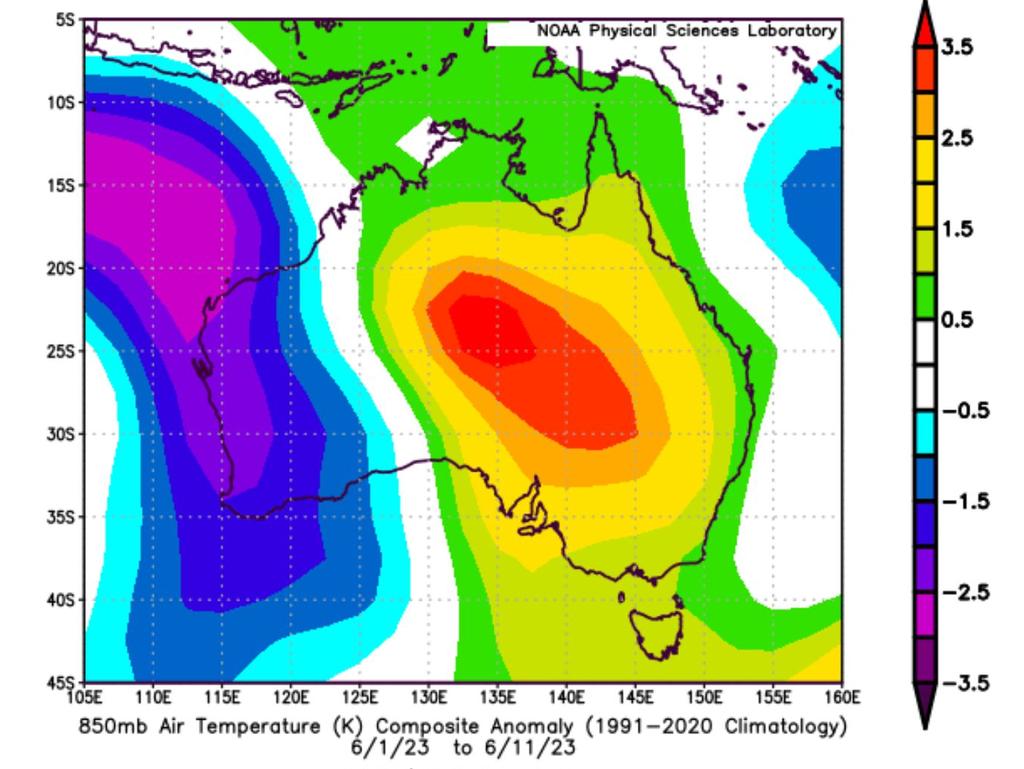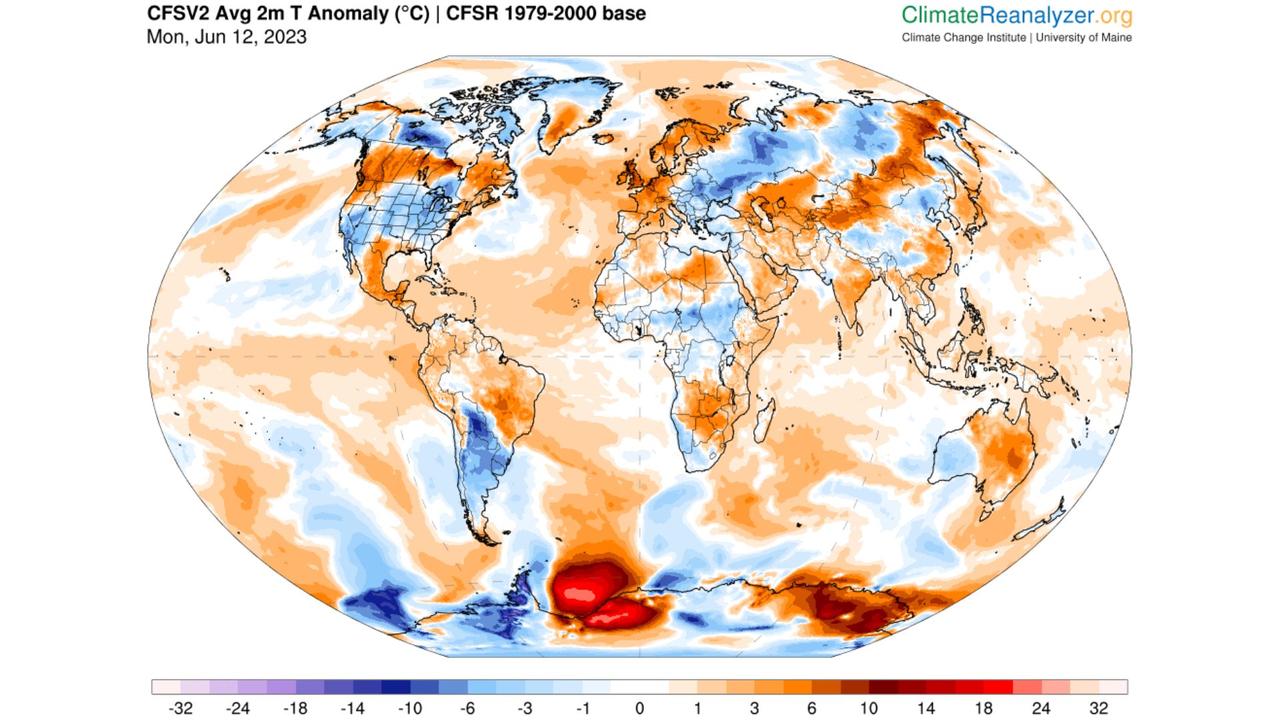Record-high global temperatures trigger warning 2023 may be hottest year on record
The warmer start to winter points to an ominous sign of what’s to come, as 2023 threatens to be the hottest year ever recorded.
Australia has had an unseasonably warm start to winter which, experts warn, may be an ominous sign of what’s to come as temperatures rise and a building El Nino pattern threatens to make 2023 the hottest year ever recorded.
And two graphs showing the abnormal temperatures in June so far could spell disaster for Australia.
For large parts of the country, the first fortnight of winter was kept unusually warm, especially for central, southern, and eastern parts of the country, website Weatherzone reports.

It was caused by a lack of strong cold fronts to push the warm air away and bring in the usual chill to the start of winter. Its absence also meant the 2023 snow season had a somewhat tepid start, with some ski fields left snowless for the opening weekend.
But this milder start to winter points to far more ominous signs in global climate data, which shows air and atmosphere temperatures are at record levels for this time of year – and may only get hotter with a building El Nino system.
Scientists at US based meteorological agency the National Oceanic and Atmosphere Administration (NOAA) have said the world just went through its third-warmest May in 174 years, with temperatures almost one degrees Celsius above average.
It comes amid a year of already record-high global ocean temperatures and record-low Antarctic sea ice cover – which hit its second-lowest coverage on record in May.
Worring charts
Preliminary NOAA data, from the first weeks of June, is already showing warmer-than-average air temperatures, high enough to challenge record-high temperatures in 2016, which is the reigning hottest year on record.
On the first chart below, that bump in summer temperatures can be seen in the blip on the black line, which represents how hot 2023 has got compared to there years. The second chart shows winter temperatures in the southern hemisphere and that too shows 2023 trending warmer. And that could mean a very hot year for Australia is in store.


NOAA data has stated that the year-to-date ranking for 2023 is that it is currently fourth hottest, behind 2016, 2017, and 2020.
But due to a shift from a triple La Nina to El Nino, climate scientists and meteorologists are concerned 2023 could leapfrog to first place.
Many, including those from the NOAA, have said they are “virtually certain” (greater than 99 per cent) that 2023 will be at least in the top 10 hottest years ever recorded. It is 89 per cent certain it will rank in the top five.

“We are watching this very closely,” Sky News meteorologist Bradlyn Oakes told news.com.au of the warmer temperatures.
“The sea surface temperatures and global temperatures have been record-breakingly warm. We are also seeing record low sea ice.”


She said it was “likely” warm temperatures will persist through 2023 and be “intensified” with the hotter, drier El Nino – which the Bureau of Meteorology is yet to declare.
“There is a very real possibility that 2023 could be the warmest year on record,” she said.
“We have seen some warm temperatures to start winter, and with the potential for El Nino looming, things are looking to be dry and warm in the seasons ahead.
“If this happens, we are watching for the risk of a bad bushfire and drought season ahead.”
This year has already seen record heatwaves far and wide, from South-East Asia to icy Siberia, while Canada has recently been scorched by huge wildfires that filled the skies above America’s east coast with toxic smog.
And in May, the World Meteorological Organisation warned that global temperatures are likely to “surge to record levels”, fuelled by both El Nino and greenhouse gas emissions.
It said there was a 98 per cent likelihood that one of the next five years, and the five year period to 2027, “will be the warmest on record”.





